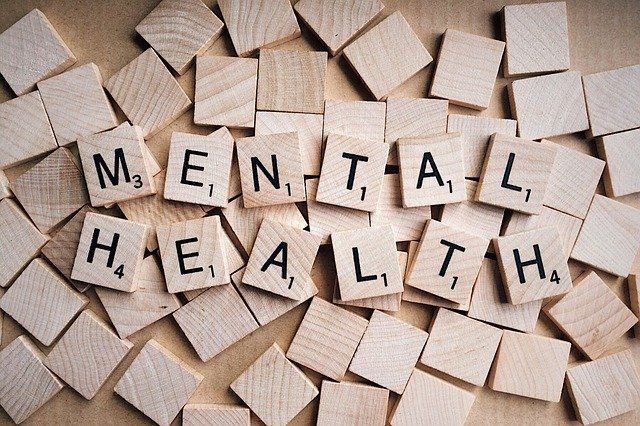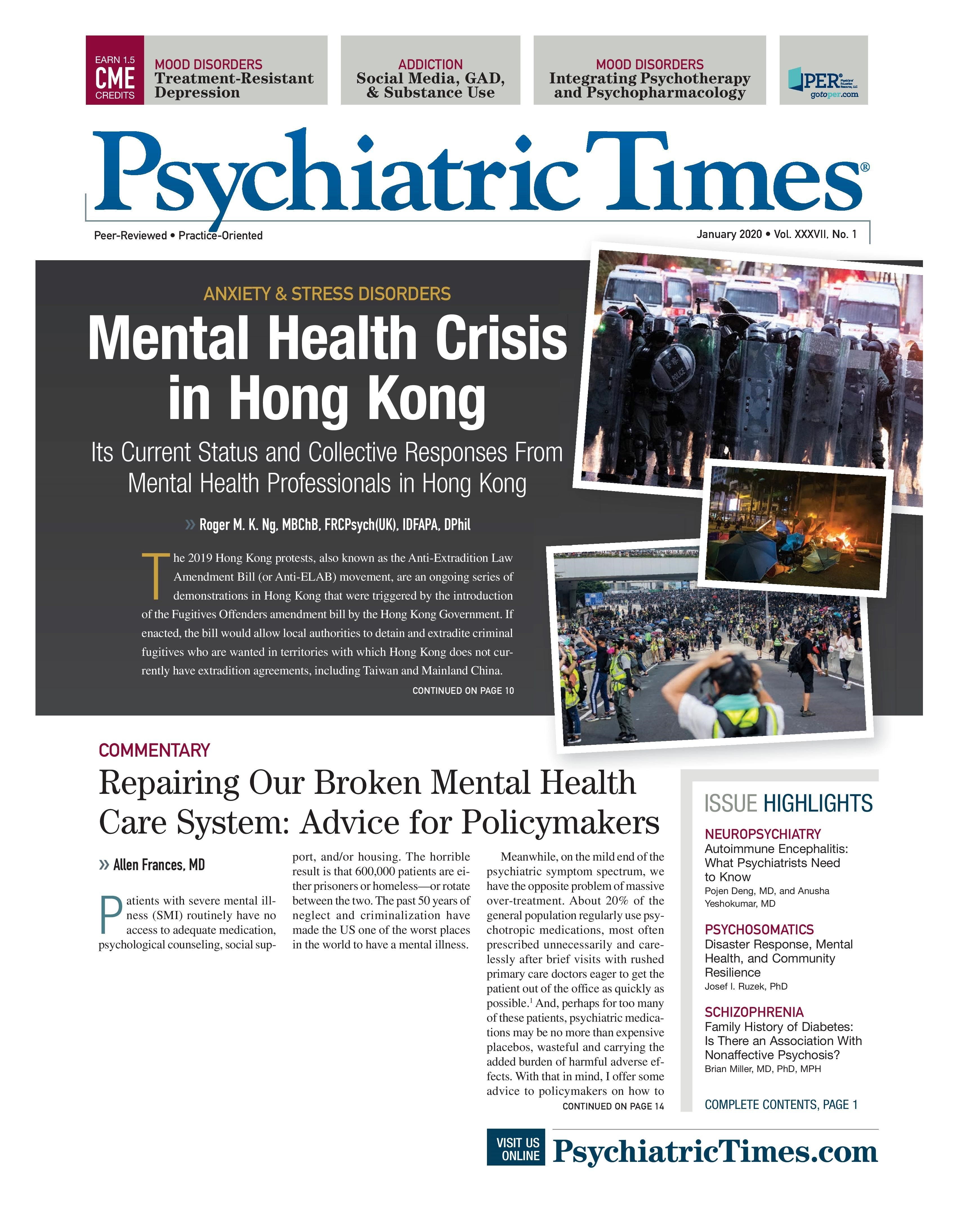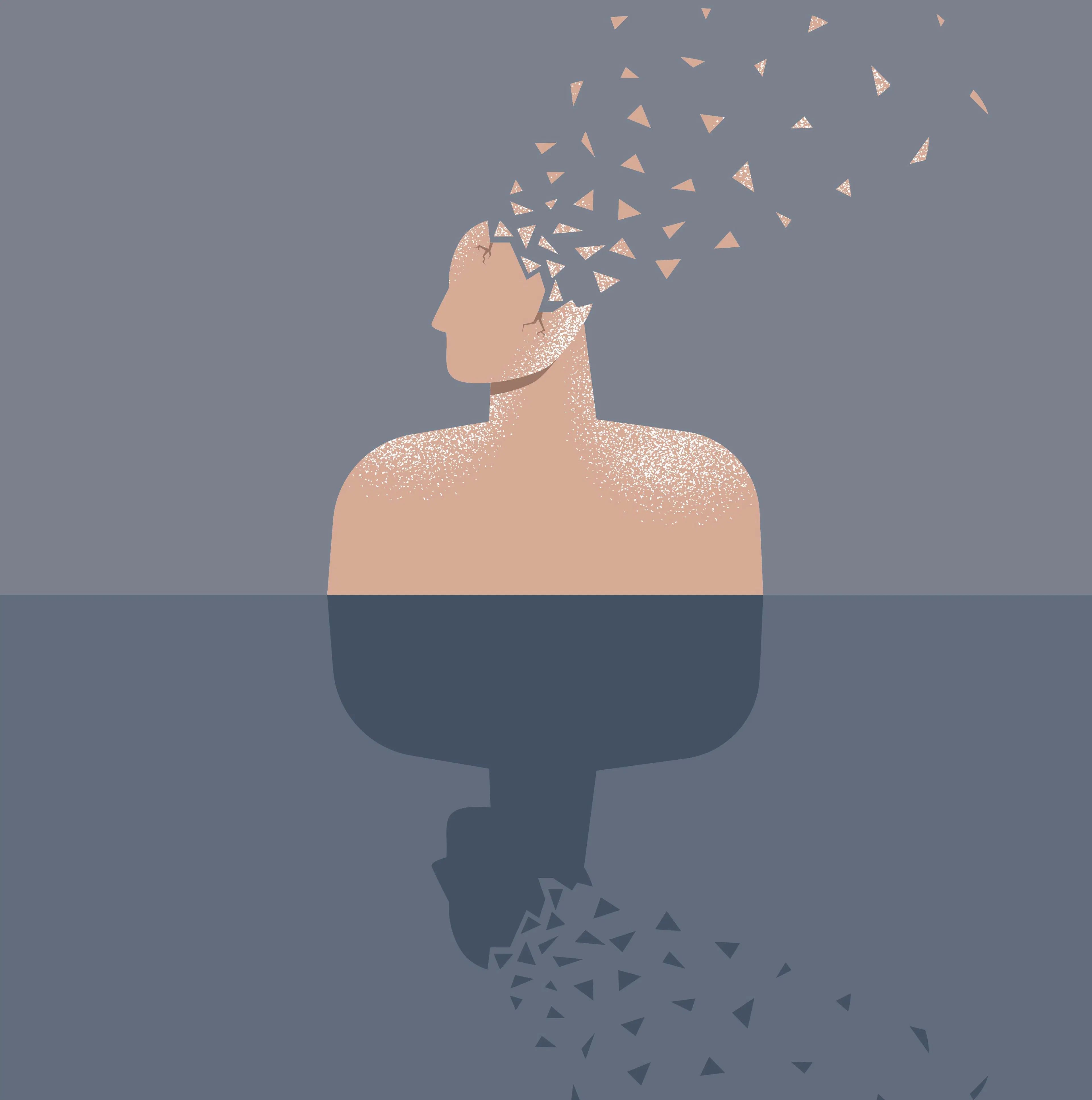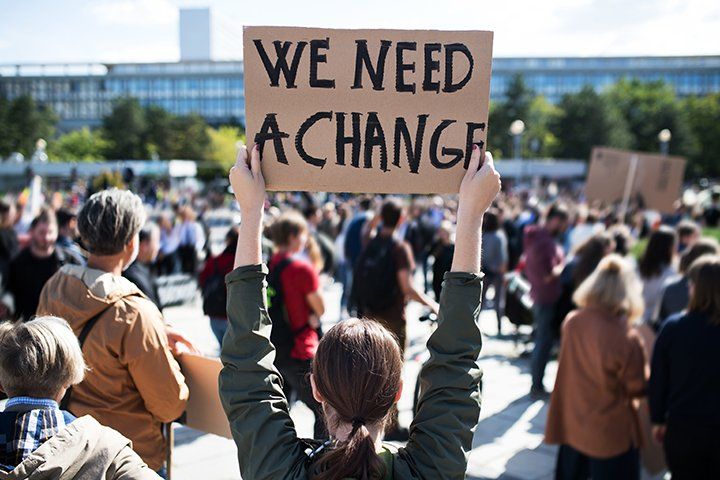Publication
Article
Psychiatric Times
Repairing Our Broken Mental Health Care System: Advice for Policymakers
Author(s):
© Shutterstock

Patients with severe mental illness (SMI) routinely have no access to adequate medication, psychological counseling, social support, and/or housing. The horrible result is that 600,000 patients are either prisoners or homeless-or rotate between the two. The past 50 years of neglect and criminalization have made the US one of the worst places in the world to have a mental illness.
Meanwhile, on the mild end of the psychiatric symptom spectrum, we have the opposite problem of massive over-treatment. About 20% of the general population regularly use psychotropic medications, most often prescribed unnecessarily and carelessly after brief visits with rushed primary care doctors eager to get the patient out of the office as quickly as possible.1 And, perhaps for too many of these patients, psychiatric medications may be no more than expensive placebos, wasteful and carrying the added burden of harmful adverse effects. With that in mind, I offer some advice to policymakers on how to solve the cruel paradox that haunts our mental health “nonsystem”-we are massively overtreating people who do not really need it, while callously neglecting those who desperately do.
The overall thrust of badly needed policy reform must be to correct this wasteful and inhumane misallocation of resources. We should be spending much less money on long-term medications for the worried well and for those with mild, transient problems. Watchful waiting and brief psychotherapy would be a much better (and cheaper) alternatives for them. And, we should also spend much less money on misallocated jail, prison, and police services. In contrast, we must spend much more money on psychiatric and addiction services to help patients avoid becoming prisoners or homeless. The following are my suggestions for policymakers in seven key areas.
Mental illness
1 The top and urgent priority must be to deinstitutionalize 350,000 mentally ill patients who are now inappropriately warehoused in jails and prisons and to rehouse 250,000 who are homeless. If we fail to correct this barbarity, nothing else we succeed in doing really matters.
2 Serious mental illness should be the focus of all publicly funded psychiatric treatment, social services, and housing-with a full push to provide universal and easy access to free services for the poor and the uninsured.
3 A high level and/or high priority mental illness (including addiction) task force composed of senior representatives from all pertinent federal agencies should be charged with developing a joint action plan to provide a nationwide system of community psychiatric, social, and housing services (along the lines of the Kennedy Community Mental Health Act of 1963). Legislation should receive urgent priority, speed through Congress with overwhelming bipartisan support, and be a feather in the cap of whichever president has the honor of signing it.
4 The funding mechanism should provide strong incentives for states and local jurisdictions to participate in the planning and implementation of the new programs and to provide matching funding over the long haul. Because there are so many stakeholders and moving parts, it is premature to speculate on precisely how funding would work and how it would be integrated with, or replace, current funding sources. It is essential that funding sources be bundled so that psychiatric, social, and housing services are integrated in seamless, wrap-around fashion. The chain of care is only as good as its weakest link.
5 Reallocate expenses to address today’s mental health issues. The US spends about $100 billion on corrections; more than one-third of which is for people with mental illness, many of whom would have avoided arrest and incarceration had adequate treatment and housing been available.
Ironically and tragically, jails and prisons have become the main providers of mental health services in the US. Mental illness is also the most worrying problem facing police officers, whose job has expanded to be the responsible first responders for untreated and potentially unpredictable patients.
Moneys saved from reduced expenditures for currently bloated jails, prisons, police, and emergency services should provide ongoing funding for community psychiatric, social, and housing services that will replace them. Deinstitutionalization from psychiatric hospitals failed so miserably 50 years ago, precisely because the large sums of money saved from closing hospital beds did not follow the patients once they were discharged into the community. After eliminating prison beds, there must be an increase in community services and psychiatric beds.
6 Integrated psychiatric, social, and medical services in the community should include enhanced emergency department (ED) psychiatry; 24-hour crisis teams that replace police first responders; walk-in clinics; easily accessed long term follow-up treatment; prompt and thorough medical care; job training; and specialized programs for the most severe mental disorders. Continuity of care must be emphasized every step of the way.
7 The number of short-term inpatient psychiatric beds needs to be increased. Preferably these should be in non-profit, general hospital settings-and not in free-standing, for-profit private psychiatric hospitals (which often deliver overpriced and less competent care).
8 Encourage dual diagnosis programs. The mentally ill are at increased risk for having comorbid substance abuse problems, and vice versa. It is vital to integrate treatment of mental illness and accompanying substance abuse. This is an especially high priority because the combination of untreated mental illness and addiction is the best predictor of violence, suicide, and other poor outcomes.
9 Increase the availability of Housing First programs, which are an essential response to the simple fact that it is impossible to adequately treat people who have no stable place to live. Homelessness is rapidly growing in cities throughout the country due to the shortage of affordable housing and the recent sharp and widespread rise in rents. The mentally ill constitute more than one third of our homeless population, now estimated at about 600,000 and are particularly vulnerable to our national housing crunch.2
Warning note: President Trump recently suggested clearing the streets of the homeless by forcing them into what would amount to federal “concentration camps.” Hopefully, this unconstitutional proposal to involuntarily incarcerate hundreds of thousands of blameless people was no more than a transient publicity stunt.
10 Encourage the use of special courts for patients who are mentally ill and addicted to substances to ensure proper referral of minor offenders to rehabilitation programs that help remedy the problems that led to arrest and avoid inappropriate incarceration in jails. Diversion programs are especially crucial in the interim before easy access to integrated care protects patients from committing the minor crimes that currently get them jail time.
11 Integrate psychiatric and medical care with housing programs. People with severe mental illness usually die prematurely-on average 20 years before the general population.3 This is largely a function of psychiatric, medical, and social neglect and can be improved only by increasing access to integrated care.
12 Increase the availability and use of vocational and job placement programs, both of which can be great investments for the individual as well as the economy. Work is often the best therapy.
13 Tighten quality control and financial audits to ensure good care and value for money spent. Currently, there is the potential for waste and mismanagement in psychiatric and addiction programs-particularly in the private system where the profit motive may drive more decisions than optimum care.
High standards must be set for allowable billings and accountable treatment. It is especially important to monitor easy access to care and continuity of care (eg, by auditing number of days before first outpatient appointment after an ED visit or hospital discharge).
14 Encourage assisted outpatient treatment, which reduces incarceration, homelessness, relapse, suicide, and violence. The coercion of court-mandated psychiatric treatment is ever so much gentler and more temporary than the cruel and extended coercion of jail or homelessness.
15 Loosen confidentiality laws in the emergency and long-term management of serious mental illness. Although appropriate in other medical settings, strict laws can be detrimental in this setting. Family support and participation in decision making is needed to help patients whose judgment may be impaired. Laws must balance the value of confidentiality against the need for clinical common sense.
16 Temper the enthusiasm for universal screening for psychiatric disorders. This is a terrible idea in the general population, although it is extremely popular. The harms done (eg, overdiagnosis, excess medication, stigma, misallocation of scarce resources away from the severely ill) far outweigh the benefits. In contrast, screening in high-risk groups has a very good benefit-to-risk ratio (eg, mothers perinatally, victims of extreme stress, high risk families).
Addiction
17 It is past time to stop fighting the long-lost supply side “war against drugs.” Instead, it is time to reduce demand by providing adequate treatment and prevention. All attempts at interdiction and prohibition have failed in the past and will always fail in the future. Where there is a strong will to get drugs, a clever way will be found to provide them.
18 Adopt harm reduction models-this is the only rational approach for street drugs. Fentanyl is an irrevocable game changer. There has never been a time when illegal street drugs have been so ridiculously cheap, lethally potent, varied, and convenient to smuggle and distribute.
By a combination of design and accidental contamination, illegal fentanyl now has become almost ubiquitous in street drugs and counterfeits. In just 6 years, it has grown from minor threat to disaster drug-responsible for almost half of all the exponentially growing overdose deaths.4 Current drug policy is impotent to stop, or even limit, the rush toward fentanyl death and destruction.
19 Free market competition, not interdiction, is the best way to defeat cartels and reduce drug crime. Legalizing drugs (Table) should be seen both as a safety measure for the users and an economic weapon against the cartels-not a revenue-raiser for states. For legalization to work, legalized drugs must be priced low enough to compete successfully against street drugs. Legalization can help states save big money on corrections; it becomes self-defeating if it also is used as a tax opportunity.
20 Get rid of the one-size-fits-all notion in treating drug addiction. Puritanical abstinence ideology should not be an exclusive guide to policy. The previous (morality-driven) emphasis on 12-step abstinence has created a great shortage of harm reduction programs using medically assisted treatment. Paradoxically and stupidly, government inaction in regulating the overuse of prescription drugs facilitated the opioid epidemic, while excessive government restrictions prevented the widespread use of the very medications (eg, suboxone) needed to reduce impairment and deaths. Abstinence is possible for some, an aspirational goal for many, but not a foundation for sensible drug policy.
21 Take control of the vaping crisis. The e-cigarette epidemic among young teenagers (started via candy-flavored nicotine products)
has already become a gateway to the vaping of much more dangerous pot synthetics. The next logical step in this dangerous progression may
be the lethal vaping of hard street drugs. We must hope that this cat is not already out of the bag.
Unscrupulous vaping companies must be sued and fined; schools need to regain control of their bathrooms; and well-funded public education campaigns should make vaping as uncool as smoking. Drug prevention has never been very successful in the past, but it has never been tried on the same massive scale that worked in making smoking tobacco a dirty habit rather than a rite of passage to adulthood.
22 It is crucial that opioid money awarded to state and local jurisdictions be used exclusively to fund addiction programs. There will be massive fines and settlements (my guess about $100 billion) imposed on the drug companies, distributors, and retailers that knowingly promoted the opioid epidemic. The tobacco settlement money (more than twice as much) never found its way to the victims, as states instead used it to reduce taxes or fund other programs (notably prisons).
23 We must not allow political and commercial foxes to guard the public health henhouse. Regulatory capture by industry contributed greatly to the damage done by the tobacco, opioid, and vaping epidemics. The FDA is 45% financed by the drug industry.5 Its staff and leadership may have a much-too-intimate, revolving door relationship with it.
The FDA’s independence and monitoring authority has also been steadily eroded by political pressure and Congressional statute. The Drug Enforcement Agency was a toothless tiger in controlling the prescription opioid epidemic because its leadership was subservient to industry.6
Suicide
24 Manage sociocultural and political issues that influence suicide risk. Suicide rates have increased 24% during the past 20 years, accounting for almost 50,000 deaths/year.7 Factors outside psychiatry probably have the most influence, particularly increased accessibility to the most common means (eg, guns, drugs); increasing economic inequality and job insecurity; and the contagious perils of social networking.
There will never be one solution to suicide and most of the effective measures taken to reduce overall rates are outside mental health policy and practice. The best suicide prevention is reducing access to guns and drugs; providing a better social safety net; and good treatment for people who are at high risk.
25 Reconceptualize Zero Suicide programs, which are poorly named because they set an unrealistic expectation and imply that caregivers or loved ones could have prevented the suicide had only they been smarter or tried harder. Suicide can be reduced, but never completely eliminated.
26 Keep in mind that the simple things work best in reducing suicide in high-risk groups: continuity of care; easy access to treatment; close follow-up every step of the way with timely and frequent appointments; involvement with family and other supports. There is no magic way to prevent suicide, but good care and caring go a long way.
Gun control
27 Don’t forget the basic fact: guns kill people. The US has a remarkably high rate of gun death compared with peer countries. Each year guns are responsible for about 24,000 deaths by suicide, 15,000 deaths by homicide, 1000 deaths by accident, and an additional 70,000 non-lethal gun injuries. We do not have higher rates of mental illness than peer countries, but we do have remarkably lax gun regulation and 400 million guns in circulation.8
28 Red flag laws that restrict gun access for people with severe and persistent mental illness or addictions make great clinical and policy sense, particularly in reducing deaths by suicide. However, such laws will not come close to solving America’s gun violence problem because only a tiny percentage of murders are committed by people with mentally illness (who are much more likely to be victims of gun violence than perpetrators).
29 Be wary of the National Rifle Association’s political support for better mental health care, which is a great good being done for a great evil. The NRA is attempting to distract attention from desperately needed gun control laws with the absurd and stigmatizing claim that most people who misuse guns are mentally ill.
Mental health advocates are understandably delighted to exploit powerful NRA political support for more mental health services. But we must not be deterred from simultaneously continuing the fight for desperately needed gun control. America would still have terrible gun violence statistics even if we could suddenly cure everyone with a mental illness. We need both much improved mental health services and better gun control laws.
Reducing over-treatment
30 Direct to consumer marketing of pharmaceuticals needs more oversight. The US is the only country in the world (aside from New Zealand) that allows direct-to-consumer advertising. This privilege has been abused and should be eliminated. Rules governing marketing to doctors should be tightened. The public needs to learn that a pill for every problem does not exist.
31 Ensure a separation of church and state-industry and the FDA.
There is a revolving door that creates an inherent pro-pharma bias-FDA leadership and staff are often recruited from industry and return to it.9 The result-ineffective, unsafe, and expensive new drugs are almost never rejected and, once approved, drugs are inadequately monitored for harm or not monitored at all. The only way to protect patients and taxpayers is to restore complete FDA independence from industry and political influence.
32 Ensure proper training of other specialties. Primary care doctors now prescribe 80% of all psychiatric medications-often after very brief visits for patients who do not need them.1 They would prescribe fewer unnecessary medications if they had more time to talk to their patients. Most of the emotional problems mistreated with medications may be better handled with advice, support, and watchful waiting.
33 Remove the diagnostic requirement for insurance coverage. Insurance companies require doctors to jump to premature diagnosis and treatment as the precondition for reimbursement. Instead, allowing for an extended period of evaluation would result in much more careful diagnostic and prescribing habits and less long-term use of unnecessary medications.
34 Deprescribing should be extensively taught during medical school and residency training as well as continuing medical education. Physician training includes extensive teaching on how to prescribe drugs and almost no teaching on how to deprescribe them. This is backwards-prescribing is fairly easy to learn and requires relatively little skill. Deprescribing is complicated and requires the finest clinical judgement.
35 There is an urgent need for unified medical care, which is essential and generally lacking. The more doctors a patient has, the more medications will be prescribed-particularly when each doctor neither knows nor cares what the others are doing. Medication adverse effects are the most common cause of new symptoms in someone taking multiple drugs, particularly common among the elderly, who clear and metabolize drugs much more slowly.
36 Make brief psychotherapy easily accessible. Psychotherapy is preferable to medications for most mild to moderate psychiatric problems. It is just as effective, much safer, and with an enduring positive impact.10 The misleading mantra that psychiatric problems all result from a chemical imbalance and therefore everyone requires a chemical cure is misleading.
Research
37 Research budgets should be rebalanced to provide adequate funding for projects that contribute practical findings to improve people’s lives-even if they do not further scientific understanding of brain or gene functioning. The massive budgets of the National Institute of Mental Health, the National Institute on Drug Abuse, and the National Institute on Alcohol Abuse and Alcoholism are focused on brain mechanisms-not on clinical and services research.
Not surprisingly, we have learned a great deal about brain function and genetics, which has very little of value in helping patients. The past 30 years of intense research and fascinating discovery has made it abundantly clear that the brain and genetics are far too complex to yield any simple answers or breakthrough cures. We must reduce patient suffering now, not wait for promised breakthroughs that never happen.
38 Top priority should be given to research studies and demonstration projects that reduce the incarceration and homelessness of people with serious mental illness and addiction. Public health significance, not just scientific interest, should be an important factor in selecting which projects are funded.
39 Keep in mind that there is an enterprise-wide bias hype positive results, ignore negative studies, and neglect to replicate study results. This distortion leads to tried-and-true treatments for mentally ill patients to be overlooked while the untried and untrue are prematurely promoted.
Advocacy
40 Advocacy has failed in the past and, unless radically changed, is likely to continue to fail in the future. We are the richest country in the world, but we shamelessly and barbarically neglect our most vulnerable citizens in a way that would not be tolerated in any of our peer countries. Politicians respond only to money, votes, and public shaming-patients with serious mental illness and addiction are often poor, don’t or can’t vote, and have no public voice.
41 Our current crisis makes this a potential moment of rare opportunity-don’t waste it. The armies of homeless living desperate lives in plain sight in most major cities are impossible to ignore. The “not in my neighborhood” reflex against treatment programs and housing becomes much less powerful when the homeless are already in your neighborhood.
The opioid crisis, that afflicts millions, and kills tens of thousands every year, is also impossible to ignore. The push for correctional reform occasioned by frequent police shootings and the prison crisis have made police officers and sheriffs the most effective advocates for better services and housing for those suffering from serious mental illness and addiction.
42 Remember that mental illness and addiction strike families indiscriminately across the political divide. This is one issue that can and should achieve universal bipartisan political support.
Concluding thoughts
I would love to end on an uplifting “Yes we can” inspirational note. But the past 60 years of neglect would make it ring hollow. Our best (only) hope is that the most concerted efforts, occurring in what is now the most inescapably desperate context, will end the complacency and achieve what has heretofore been impossible: at long last, to force our country to do the simple and right thing, which also happens to be the smart thing.
Editor’s note: What advice would you share with policymakers, patients, and family members? What do you wish your colleagues in psychiatry or general medicine knew or did? And, what advice did you wish someone had shared with you? Send your thoughts to PTEditor@mmhgroup.com
Disclosures:
Dr Frances is Professor Emeritus and former Chair, Department of Psychiatry, Duke University; Chair, DSM-IV Task Force. He is the author of Saving Normal and Essentials of Psychiatric Diagnosis. Twitter: @AllenFrancesMD. The views expressed in this article are those of the author and do not necessarily reflect the opinions of Psychiatric Times.
References:
1. Miller SG. One in six Americans takes a ssychiatric drug. Scientific American. December 13, 2016.
2. Treatment Advocacy Center. Research Weekly: Homelessness Increases Among Individuals With Serious Mental Illness. January 11, 2018.
3. National Institute of Health. Combating Early Death in People With Serious Mental Illness. November 4, 2015.
4. Centers for Disease Control and Prevention. Fentanyl.
5. US Food and Drug Administration. Fact Sheet: FDA at a Glance. October 2019.
6. Kaiser Health News. KHN Morning Briefing: Justice Department Report: DEA Let Painkiller Production Surge Even as Opioid Epidemic Alarm Sounded. October 2, 2019.
7. Centers for Disease Control and Prevention. Suicide Rising Across the US.
8. Pew Research Center. What the Data Say About Gun Deaths in the US. August 16, 2019.
9. Piller C. FDA’s revolving door: companies often hire agency staffers who managed their successful drug reviews. Science. July 5, 2018.
10. Cuijpers P, Quero S, Dowrick C, Arroll B. Psychological treatment of depression in primary care: recent developments. Curr Psychiatry Rep. 2019;21:129.

Newsletter
Receive trusted psychiatric news, expert analysis, and clinical insights — subscribe today to support your practice and your patients.






